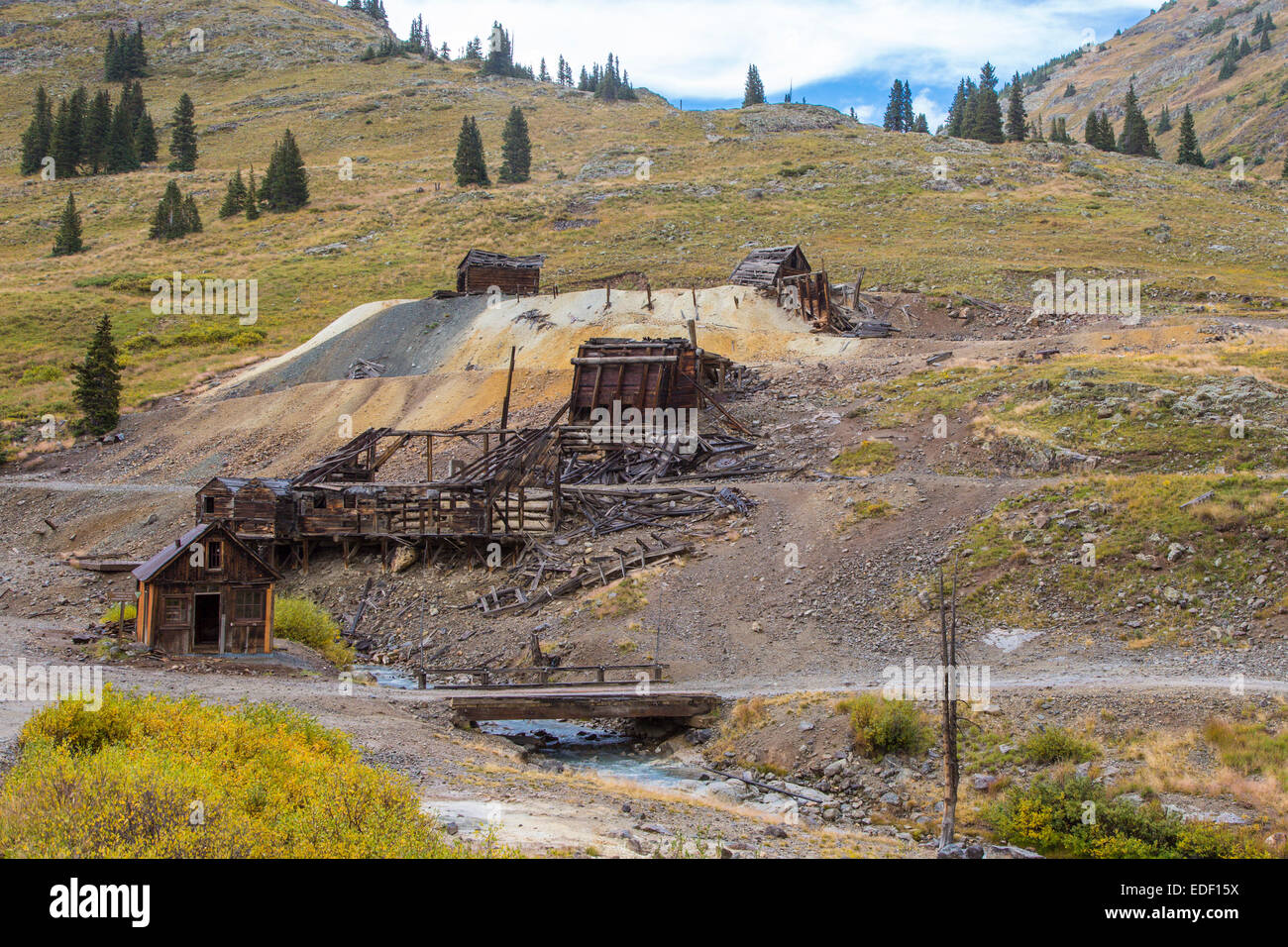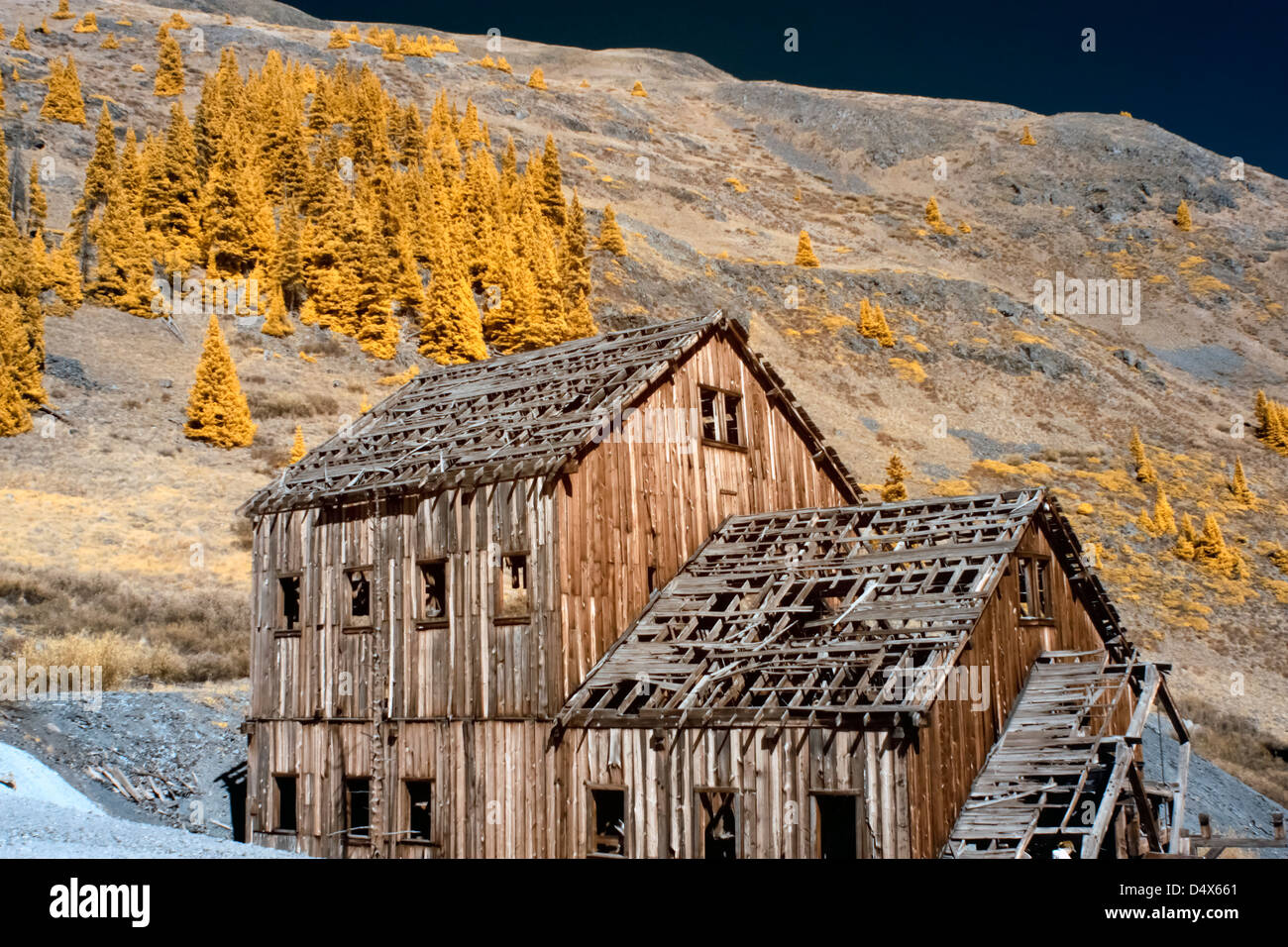
Animas Forks: Where Ghostly Echoes Meet Alpine Majesty
Perched precariously at an elevation of 11,200 feet (3,414 meters) amidst the unforgiving grandeur of Colorado’s San Juan Mountains, lies Animas Forks. It is not merely a collection of decaying wooden structures; it is a stark, silent monument to human ambition, resilience, and the relentless pursuit of fortune. A ghost town by definition, Animas Forks resonates with the spectral echoes of its past, drawing modern adventurers and history buffs into a landscape where the thin air and piercing silence speak volumes about a bygone era.
To understand Animas Forks is to grasp the sheer audacity of the men and women who carved a living, and for a brief, glorious period, a thriving community, out of this remote and hostile environment. Its story is inextricably linked to the frantic silver and gold rushes that swept through the American West in the late 19th century, transforming pristine wilderness into bustling, if often ephemeral, boomtowns.
The Lure of the Lode: A Town Born of Silver

The year was 1873 when prospectors, pushing ever deeper into the rugged San Juans, discovered rich veins of silver and gold in the upper Animas River basin. The promise of gleaming ore, lying hidden beneath the earth, was a siren call too powerful to resist. Miners flocked to the area, establishing rudimentary camps that quickly grew into a nascent settlement. Animas Forks, named for its location at the confluence of the three forks of the Animas River, was officially established in 1875.
Life in these high-altitude mining camps was no pastoral idyll. It was a brutal existence, defined by back-breaking labor, isolation, and the ever-present threat of the elements. Winters were legendary for their severity, often dumping dozens of feet of snow that could bury entire cabins and cut off the town from the outside world for months on end. Avalanches were a constant peril, claiming lives and destroying property with terrifying regularity. The mining season was short, typically from May to October, forcing a frantic pace of work to extract as much ore as possible before the first heavy snows descended.
Yet, despite these formidable challenges, the town grew. By the early 1880s, Animas Forks boasted a population that fluctuated between 300 and 400 residents, swelling to perhaps 500 during peak summer months. It was a diverse community, a melting pot of hardened prospectors, enterprising merchants, saloon keepers, assayers, and a smattering of families who dared to brave the frontier. The desire for wealth, the hope of striking it rich, fueled an unyielding spirit.
As local historian and author Duane A. Smith once noted about the general mining boom in Colorado, "These were not men looking for an easy life. They were men driven by a dream, willing to endure incredible hardship for the chance of a fortune." This sentiment perfectly encapsulates the spirit of Animas Forks.
A Glimpse of Civilization in the Wild
To sustain such a population, Animas Forks quickly developed the infrastructure of a legitimate town. At its peak, it featured a post office, a general store, a hotel, multiple saloons, a blacksmith shop, a livery stable, and an assay office where miners could have their ore tested for purity and value. These establishments provided not just goods and services, but also a crucial sense of community and normalcy in an otherwise extreme environment.
One of the most iconic structures still standing today is the MacKenzie House. Built in 1879 by Edward and William MacKenzie, who were involved in local mining operations, this two-story, L-shaped structure was considered quite grand for its time and place. It featured glass windows, a rarity, and served as both a residence and potentially an office. Its relatively preserved state makes it a focal point for visitors, offering a tangible link to the domestic life of the town’s more prosperous residents. Imagine the warmth of a fire within its walls, the murmur of conversations, the clatter of daily life, all against the backdrop of howling blizzards and the incessant search for silver.
Crucially, Animas Forks was connected to the outside world, albeit tenuously. Initially, supplies and ore were transported by pack trains of burros and mules over treacherous mountain passes. This made everything incredibly expensive. A sack of flour, a barrel of nails, or a bottle of whiskey could cost many times its value in a city like Denver.

The arrival of the Silverton Northern Railroad in 1904, a narrow-gauge line extending from Silverton, was a monumental event. Though it only reached Animas Forks a bit after its initial boom, it revitalized the town for a time, making it easier and cheaper to transport ore out and supplies in. This railway, part of Otto Mears’ ambitious "Rainbow Route," symbolized a brief resurgence, a hope that the good times might return. The train, huffing and puffing its way up the steep grades, was a lifeline, a tangible link to the comforts and markets of the lower elevations.
The Inevitable Decline: The Silver Panic and Beyond
But like many boomtowns, Animas Forks’ prosperity was as fleeting as the alpine summer. The primary driver of its fortunes was silver, and its fate was sealed by external economic forces beyond its control.
The Silver Panic of 1893 struck a devastating blow. The repeal of the Sherman Silver Purchase Act caused the price of silver to plummet overnight. Mines that were once profitable became economically unviable. Many operations ceased, and miners, faced with dwindling prospects, began to leave. The initial exodus was slow, but steady. Families packed their meager belongings, businesses shuttered their doors, and the vibrant hum of the town began to fade.
While some hardy souls remained, clinging to the hope of a rebound or diversifying into gold mining, the town never fully recovered its former glory. The railway, though a boon, arrived too late to reverse the fundamental economic shift. By the 1920s, Animas Forks was largely deserted, its buildings standing sentinel against the relentless forces of nature. The last permanent residents are believed to have left around 1927. The silent structures, battered by wind and snow, began their slow, graceful decay into the landscape.
Animas Forks Today: A Ghostly Testament
Today, Animas Forks stands as one of Colorado’s best-preserved and most accessible ghost towns. It is maintained by the Bureau of Land Management (BLM) and the San Juan County Historical Society, who have undertaken significant preservation efforts, stabilizing structures and providing interpretive signage. These efforts ensure that future generations can witness this powerful piece of American history.
The air in Animas Forks is thick with stories untold. Walking among the remaining buildings – the MacKenzie House, the jail, remnants of the assay office and saloon – one can almost hear the echoes of pickaxes striking rock, the distant clang of the blacksmith’s hammer, the raucous laughter from a saloon, or the whistle of the Silverton Northern. The silence is profound, broken only by the whisper of the wind through broken window panes or the cry of a hawk circling overhead.
"Every time I come up here," says Sarah Jensen, a photographer from Denver who makes an annual pilgrimage, "I feel a profound connection to the past. It’s like the mountains themselves are whispering stories. You can almost see the faces of the people who lived and died here, their hopes and their struggles etched into these old timbers."
The Modern Pilgrimage: An Adventure into History
Reaching Animas Forks is an adventure in itself, part of its enduring appeal. It is a popular destination for four-wheel-drive enthusiasts, ATV riders, and hikers, particularly those traversing the famed Alpine Loop Scenic Byway. This historic route connects Silverton, Lake City, and Ouray, passing through some of the most spectacular and rugged mountain scenery in the continental United States. The road to Animas Forks is unpaved, often rocky, and subject to closure due to snow for much of the year, typically only accessible from late May or early June through early October.
For many, the challenge of the journey enhances the reward. The isolation that once plagued its residents now adds to its mystique. Visitors are urged to respect the fragile nature of the site, to "take only pictures and leave only footprints." The high altitude requires caution, as altitude sickness can be a real concern.
Lessons from the Heights
Animas Forks is more than just a collection of decaying buildings; it is a powerful symbol. It speaks to the incredible human capacity for ambition and endurance, the relentless pursuit of wealth, and the often-harsh realities of life on the American frontier. It’s a stark reminder of the impermanence of human endeavor when pitted against the overwhelming power of nature and the fickle hand of economic fate.
It teaches us about the cycle of boom and bust, a pattern repeated throughout history wherever resources are discovered and exploited. It highlights the ingenuity required to build a community from scratch in such an improbable location. And perhaps most importantly, it underscores the importance of preserving these tangible links to our past, allowing future generations to walk in the footsteps of those who dared to dream big in the face of insurmountable odds.
As the sun dips below the jagged peaks of the San Juans, casting long, dramatic shadows across the valley, Animas Forks endures. It is a silent sentinel, a ghostly testament to a vibrant, tenacious spirit that once thrived high above the clouds. It invites us not just to observe its ruins, but to listen to its whispers, to feel the weight of its history, and to reflect on the enduring legacy of those who once called this magnificent, unforgiving place home. In its solitude, Animas Forks offers a profound connection to the American story, echoing with the dreams and determination of a bygone era.


